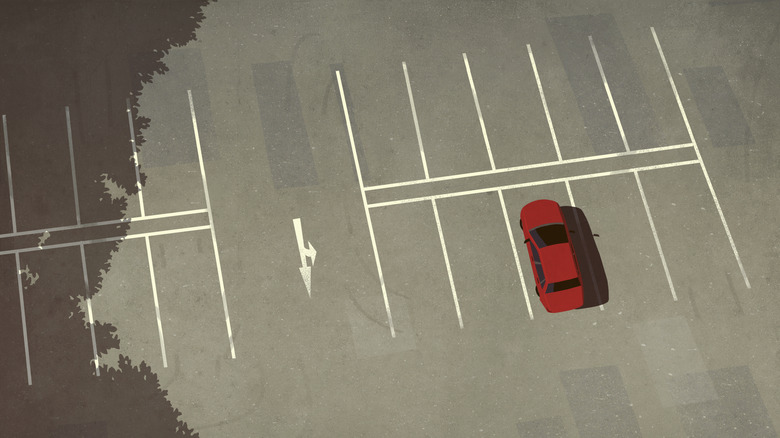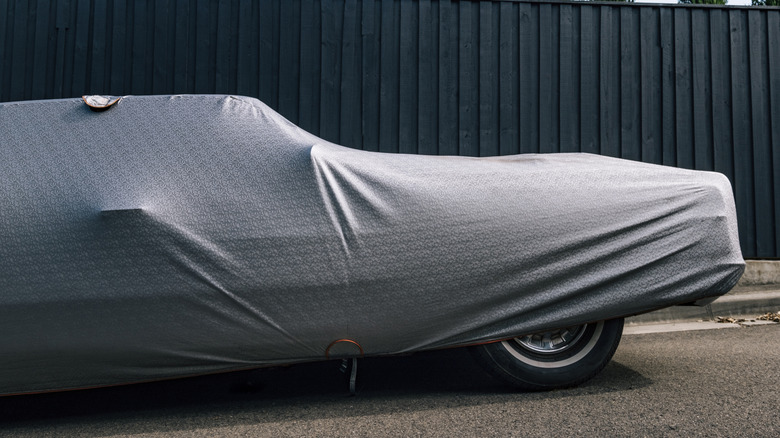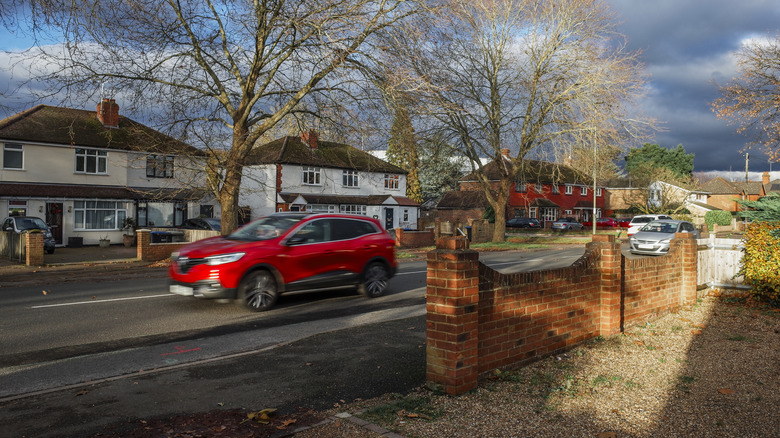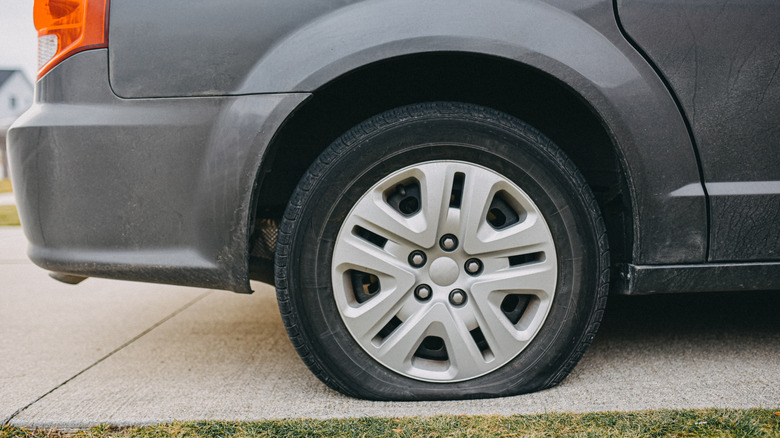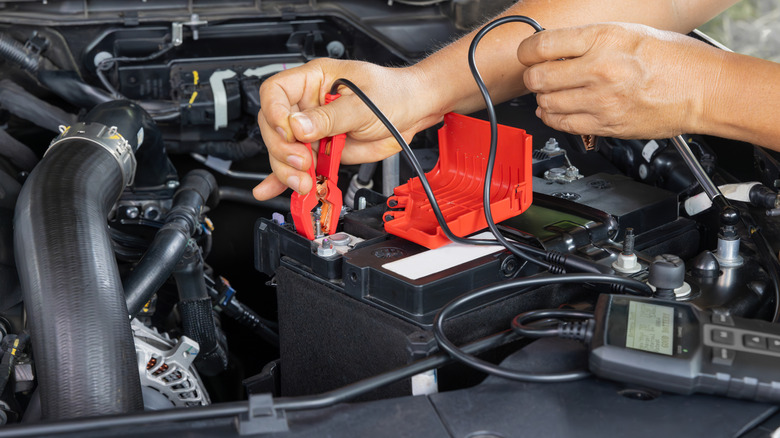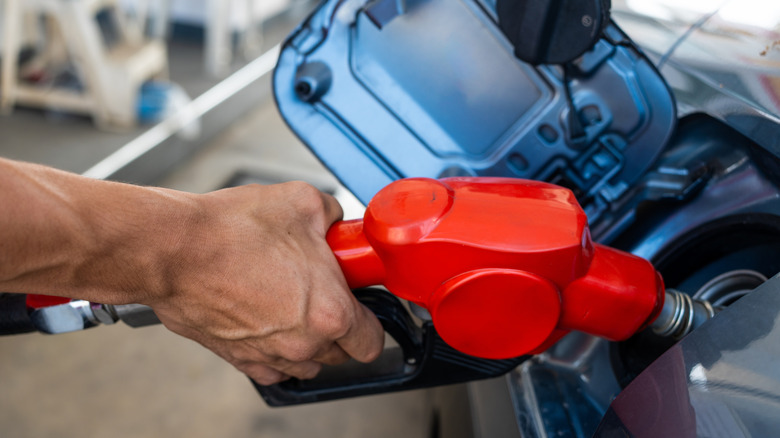How To Properly Maintain A Car You Aren't Using Or Driving Regularly
Not everyone who owns a car uses it with the same consistency. If you live somewhere within easy walking distance of shops and services, for example, you may only take a drive once every few days, if that. You're still using your car enough that you wouldn't consider it to be in storage, but not nearly as much as someone who needs to drive to and from work every day. This is a bit of a tricky situation, as you want to ensure your car stays in good condition while you're not using it, but you also can't prepare it for storage conditions because you're still using it a little.
Even if you're not going for full long-term storage on your car, there are a few tricks from that playbook you can employ to keep your seldom-used car in good condition. It's all about methods and tasks that will keep your car safe and healthy for long stretches without diminishing your ability to drive it when you want to. This includes some sensible measures like cleaning and covering it up, inspecting the tires, and taking it for a periodic spin, as well as some more in-depth options like hooking up a trickle charger or adding a fuel stabilizer.
Keep it clean and covered
Whether you're driving your car every single day or only once every couple of weeks, the golden rule remains: a clean car is a happy car. Cleaning up the car's exterior with automotive soap, polish, and/or wax not only keeps it looking nice, it helps prevent the onset of corrosion and grimy substances, the ultimate enemies of any vehicle in short- or long-term storage. In addition to the exterior, you should give the interior a thorough cleaning as well to prevent dust buildup and ward off pests like bugs and mice. Whenever you do finally take your car for a drive, the last thing you want is to climb into the driver's seat and have a massive cloud of dust fly up into your face.
Besides periodic cleaning, it might also be to your benefit to get some manner of covering for your car, doubly so if it's parked outside. Placing a cover on your car helps to protect it from damage from the elements while still allowing for a reasonable amount of airflow. If your car is left in an outdoor parking lot, you never know what kind of scratches and bumps can accumulate while you're not paying attention to it — a cover will help to protect it. Granted, you'll have to take the cover off to drive it and put it back on afterward, but this is less of a chore if you're only driving once in a while.
Start it up once in a while
One of the nice things about owning a car is that you don't always need a reason to take it for a spin. You can just start it up and take it out of the garage, even if it's just to take a quick lap around the neighborhood. In fact, doing this is actually good for a car you're not driving regularly because it gets the components moving and helps to loosen up its fluids.
If you've got the time, you should try to take your car out for a drive at least once a week, even if it's just for a 15-minute jaunt around the block. Starting up and rolling your car around will ensure that any components that have been sitting dry for a long time don't get completely crusted over with rust or stuck in place, as well as circulating fluids like coolant and oil. You should be especially considerate of your car's brakes, as the rotors may have accumulated corrosion or grime while they weren't in use. Make sure you pump the brakes a few times during your little jaunt so they can shake off the crud.
Incidentally, just for the sake of saying it, don't just start your car and leave it idling in the garage. Not only will that not help the internal components, it can lead to extremely dangerous carbon monoxide buildup.
Check the tires for flat spots
Have you ever brought a balloon home from a party and kept it for a couple of days, only to find it's lost most of its air without your notice? No matter how secure it seems, air has a way of escaping from even the tightest confines, leaving a deflated lump behind. The same is true for your car's tires, which can have a much more tangibly hazardous effect on your safety whenever you decide to take a drive.
When left idle, your car's tires naturally expel a small amount of air on a regular basis. This is why regular reinflation is a normal part of car ownership. However, when you leave your car stationary in one spot, more air is going to escape from the parts of the tires that are touching the ground, as they're being pressed by the car's weight. This can lead to potentially permanent flat spots, reducing your tires' overall efficacy and endangering you on a drive. To ensure this doesn't happen, you should inspect your car's tires once a month at the bare minimum. If the tire pressure seems low, you should get it refilled immediately, preferably by taking it to an automated pump. A quick drive to the gas station will take the weight off those pressed spots before they become permanently flat.
Be mindful of battery discharge
In a similar vein to the air in your car's tires, the electricity in your car's battery very slowly discharges over time, even when you're not using it. The problem is that, by design, a car's battery is always in a somewhat active state. It's what lets you start the car up as soon as you turn the key in the ignition. This means that, if your car is left idle for long enough, it'll run through its charge completely in a matter of weeks and drop dead. Forget safely driving your car, you won't even be able to start it in this case.
The best thing to keep your battery healthy is, once again, taking your car for a quick drive. Starting the car and using its systems will help preserve the battery's safe flow of electricity and keep it from needlessly discharging. If, for whatever reason, you can't take your car out consistently or at all, the next best option would be an external device like a trickle charger. A trickle charger is plugged into your car's battery to provide a slight, yet constant charge to even out the electricity lost to regular idle discharge. You don't even have to take your battery out of your car, you can just plug the trickle charger right in. Just make sure you get one with an automatic shutoff so it doesn't overcharge.
Keep cycling fuel and oil
Your car is a microcosm of various fluids and substances, with two of the most obvious being gasoline and oil. Normally, these fluids are flowing throughout the car quickly and consistently enough that they don't have time to solidify or oxidize. However, if you're leaving your car idle for long stretches, especially with fluid receptacles partially empty, they can start to solidify and gum up the works.
For gasoline, the best thing you can do is cycle it out via consistent driving, then refill the tank. Of course, if you were driving it consistently enough to burn through a whole tank, this wouldn't be a discussion. Keeping a full tank of gas will help to prevent oxidation, but in addition to that, you might want to consider adding a fuel stabilizer. While not necessary for regular engine operation, fuel stabilizer helps to keep gasoline from going stale when left idle for long stretches. Fuel stabilizer is perfect for periodically driven cars, as it helps make the gas in the tank last longer.
As for oil, there unfortunately isn't as much you can do to keep the oil in good shape on your own. As such, the best course of action is to keep to the oil change schedule as outlined in your car's owner's manual. Even if you haven't hit the typical mileage that would necessitate an oil change, bringing it in at the recommended time will help to keep the oil from deteriorating.
